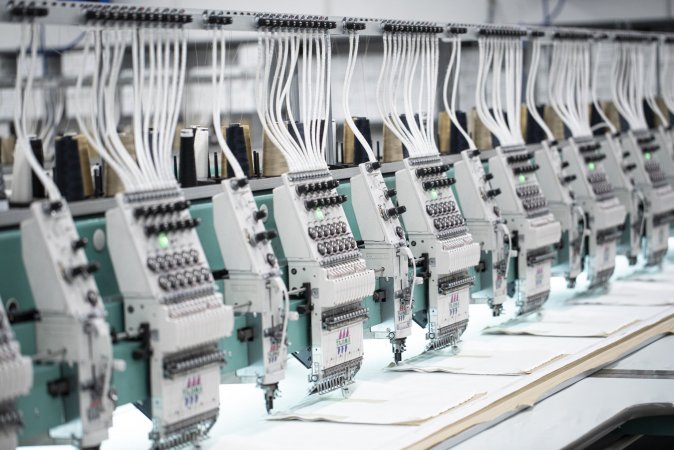The work of embroiderers: tradition and innovation
Originally, this decorative art was reserved for the upper classes, who used threads of silk, gold, and silver to create intricate designs on fine clothing and fabrics. Today, embroidery continues to be appreciated for its beauty and complexity, keeping alive a tradition that unites past and present.
TRADITIONAL EMBROIDERY TECHNIQUES: A HERITAGE TO BE PRESERVED
Traditional embroidery techniques vary enormously from one region to another, each with its own distinctive characteristics and methods. Among the best known are cross-stitch, free-motion embroidery, and carving embroidery. These techniques not only represent a fine manual art, but also a cultural heritage that today's embroiderers strive to preserve and pass on.
MATERIALS USED IN EMBROIDERY: FROM SILK TO COTTON
The materials used in embroidery are critical in determining the final result of the work. Silk has historically been the most valuable material, known for its luster and strength. However, cotton has become popular for its versatility and ease of use. Today, embroiderers have a wide range of threads and fabrics at their disposal, allowing them to continuously experiment and innovate.
THE ROLE OF EMBROIDERERS IN LOCAL COMMUNITIES
Embroiderers play a crucial role in their communities, not only as keepers of ancient traditions, but also as creators of economic and cultural value. In many regions, embroidery is a source of income and a means of sustaining local handicrafts. In addition, embroiderers help to keep their community's cultural identity alive through the transmission of traditional techniques and motifs.
THE ROLE OF BURANO'S EMBROIDERERS: AN ART HANDED DOWN THROUGH THE CENTURIES
The embroiderers of Burano, a small island near Venice, are world famous for their beautiful lace. This tradition dates back to the 16th century and has turned Burano into a renowned center for the production of high-quality lace. The women of Burano have perfected unique lace-making techniques, handing down the knowledge from generation to generation. Burano lace is not only a decorative art, but also a symbol of cultural identity and an important economic resource for the community. The lace workshops on the island attract tourists from all over the world, helping to keep this ancient craft tradition alive.
INNOVATION IN EMBROIDERY: NEW TECHNOLOGIES AND MODERN TOOLS
Innovation has also found its way into the world of embroidery. With the advent of new technologies, such as computerized embroidery machines, embroiderers can now create complex designs with greater precision and speed. These modern tools not only increase efficiency, but also allow new styles and techniques to be explored, paving the way for the continued evolution of this ancient art.

EMBROIDERY AND FASHION: COLLABORATIONS WITH CONTEMPORARY DESIGNERS
Embroidery has always had a special place in the world of fashion. Many contemporary designers collaborate with expert embroiderers to incorporate embroidered elements into their collections, adding a touch of elegance and sophistication to their garments. These collaborations not only enhance the work of embroiderers, but also bring embroidery into the international fashion design spotlight.
EMBROIDERY CLASSES: LEARNING AN ANCIENT ART IN THE XXI CENTURY
Interest in embroidery is experiencing a new spring, with many people seeking to learn this ancient art. Embroidery courses offer a unique opportunity to learn traditional and modern techniques, guided by experts in the field. These courses not only promote the training of new generations of embroiderers, but also the dissemination of a craft practice that continues to fascinate and inspire.
SUSTAINABLE EMBROIDERY: ECO-FRIENDLY MATERIALS AND ETHICAL PRACTICES
Sustainability is also becoming an increasingly important aspect in the world of embroidery. Many embroiderers are adopting eco-friendly materials, such as organic cotton threads and natural fabrics, to reduce the environmental impact of their work. In addition, adopting ethical and sustainable practices helps promote a responsible approach to craftsmanship that respects both the environment and local communities.
EMBROIDERERS OF THE FUTURE: YOUNG TALENT AND NEW TRENDS
The future of embroidery is in the hands of young talent who are bringing new ideas and approaches to this traditional art. New generations of embroiderers are experimenting with contemporary styles and advanced technologies, creating works that blend tradition and modernity. These young artists are critical to ensuring that embroidery continues to evolve and remain relevant in the modern world.
Digital embroidery represents one of the most exciting innovations in the field of embroidery. Using specialized software, embroiderers can create intricate designs that are then produced by automated embroidery machines. This fusion of manual art and technology allows new creative possibilities to be explored while keeping the handcrafted quality of the work intact.